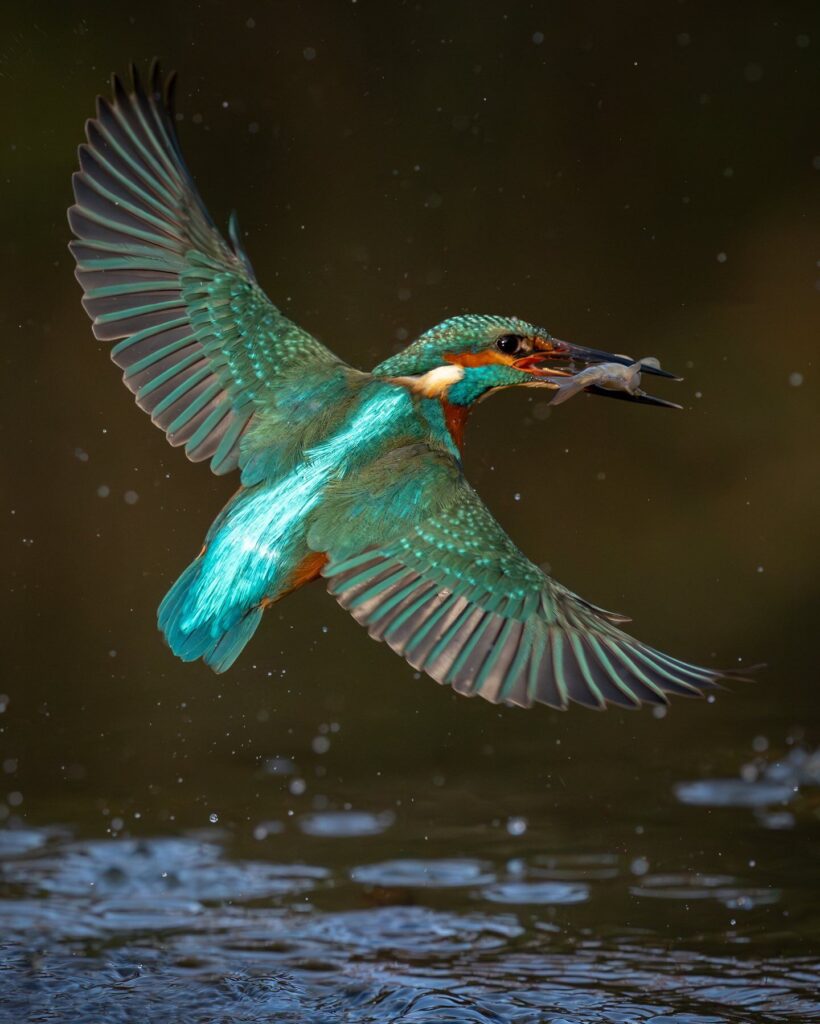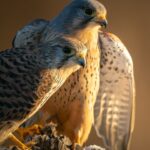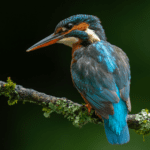
Capturing the Magic of Kingfishers: A Photographer’s Passion by a River in Hampshire
If you’ve been following my photography journey for a while, you might have noticed one bird that consistently appears in my work: the kingfisher. To me, these little birds are the perfect blend of grace, colour, and character. Kingfishers aren’t just subjects to photograph—they are one of my greatest inspirations. Whether you’re new to my feed or have been following me for years, you’ll know that my approach to wildlife photography isn’t about chasing rare species or being a ‘twitcher.’ Instead, it’s about the art of capturing nature in a way that connects with me emotionally. And for me, the kingfisher is the embodiment of this connection.
Sitting by a river in Hampshire, I find myself mesmerised by the elegance of these vibrant birds. Kingfishers are undoubtedly some of the most beautiful and unique creatures in Britain, and they’ve become one of my favourite subjects. Their electric blue and orange plumage against the backdrop of flowing water is nothing short of magical. But photographing them requires more than just luck—it’s a journey of patience and perseverance. And most of the time, that journey involves sitting alone, often in the rain, in a cheap, crumpled tent, waiting for that one perfect moment.
You see, the thing about wildlife photography is that it’s never as glamorous as it seems. You don’t just show up and snap a photo of a kingfisher flying by. Hours, days, and sometimes even weeks of waiting are often required to capture that one fleeting shot. It’s not always about the number of images I take—it’s about the connection I feel with the subject in that brief instant. Nature is art to me, and my camera is simply a tool to create something that moves me.
When I’m out in the field, I don’t worry about whether the species I’m photographing is rare or well-known. It’s about finding the beauty and storytelling potential in the moment. With the kingfisher, it’s the way they dart across the water with such speed and precision, making them almost impossible to capture. It’s the way they pause, perched on a branch, their tiny form perfectly framed against the river’s current. That split second when everything aligns—when the lighting, the position, and the moment all come together—is the rush that makes the wait worthwhile.
I’ve learned so much about patience and observation through photographing these birds. It’s not about getting a perfect shot every time but about understanding the rhythm of the river and the life that thrives along its banks. If you take the time to observe these birds closely, you’ll notice their favourite spots and their feeding patterns. That’s when you get to capture the magic that others might miss. For me, that’s when the real art happens.
Being out in nature, on my own, waiting for the perfect shot, is a meditative experience. It’s not about being rushed; it’s about being present in the moment. I’ll sit by that river, in the rain, eyes focused on the water, hoping for a glimpse of the kingfisher. And when that moment happens, when the bird dives and emerges with a fish, the feeling is indescribable.
Kingfishers might be one of the most challenging birds to photograph, but they are also the most rewarding. The patience, the time spent waiting in solitude, and the connection with the bird all make capturing that perfect shot worth every second. For me, that’s the true beauty of wildlife photography.




Comments are closed.
You may also like
The Grey Seals of St.Ives, Cornwall
Diffusing light from your flash
Photographing Brown Bears in Finland: An Unforgettable Wildlife Adventure
Featured Posts


GET SOCIAL
INSTAGRAM
@snowboard.paul
@macro.paul
TWITTER
@paul__browning_
FACEBOOK
@snowboardpaul
@macro.paul.surrey
Get in Touch
GET SOCIAL
INSTAGRAM
@snowboard.paul
@macro.paul
TWITTER
@paul__browning_
FACEBOOK
@snowboardpaul
@macro.paul.surrey











